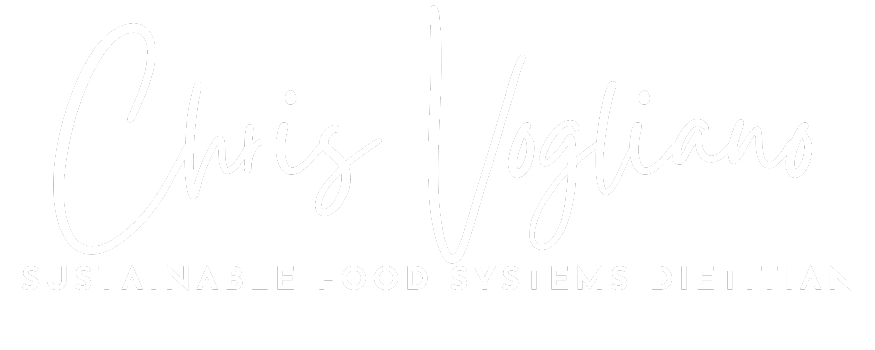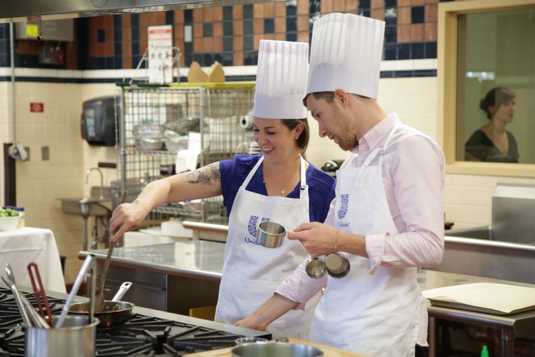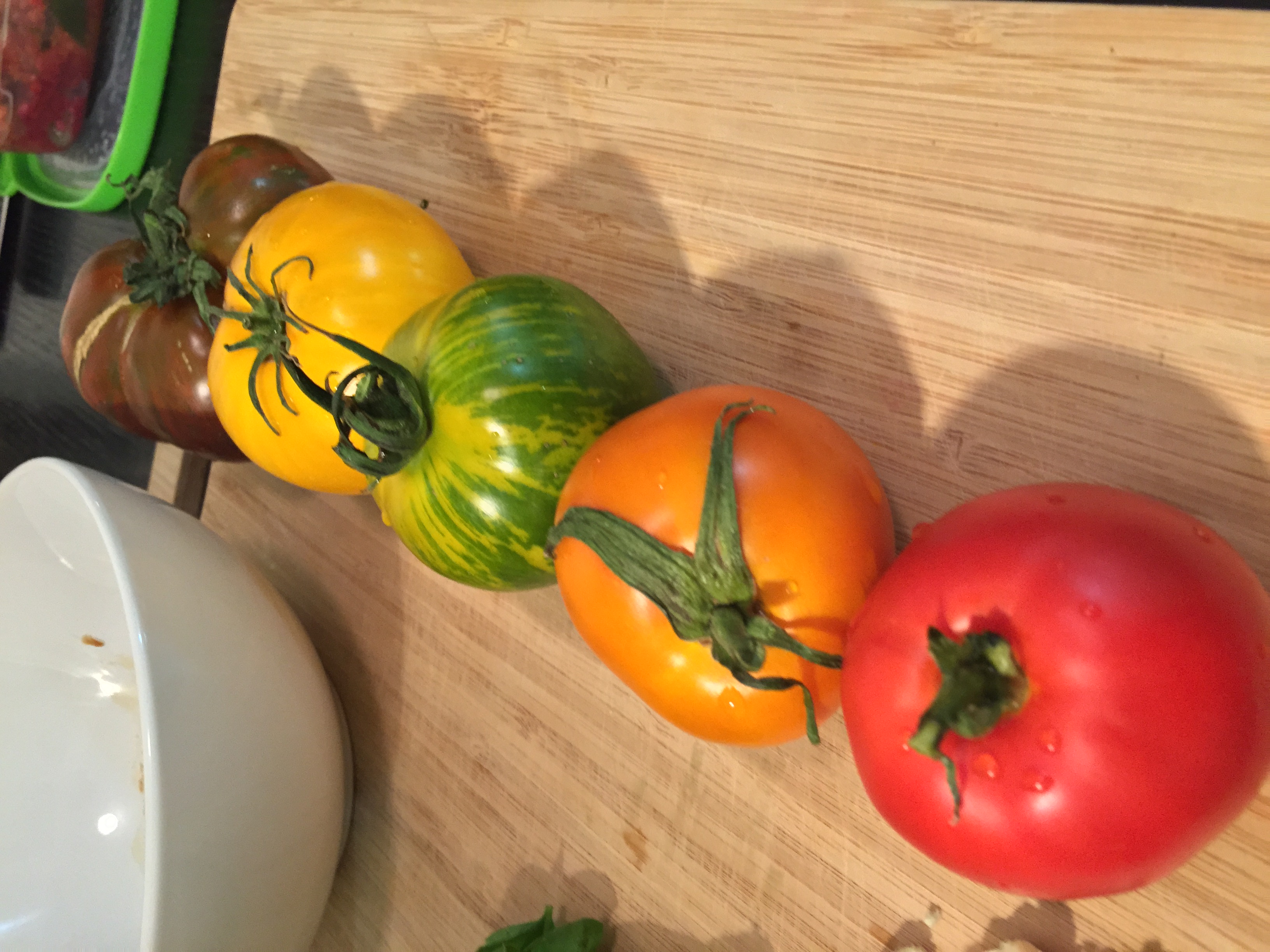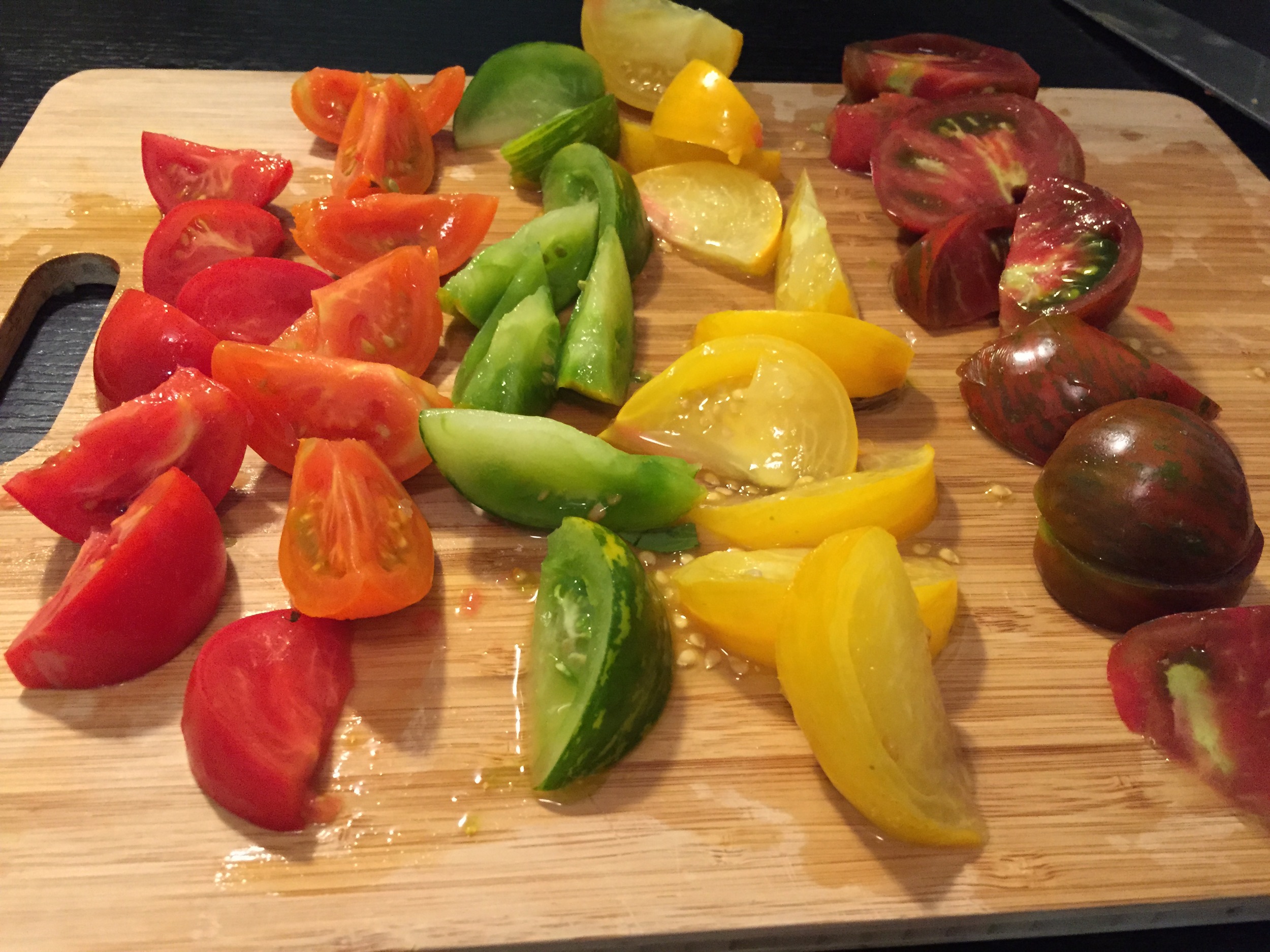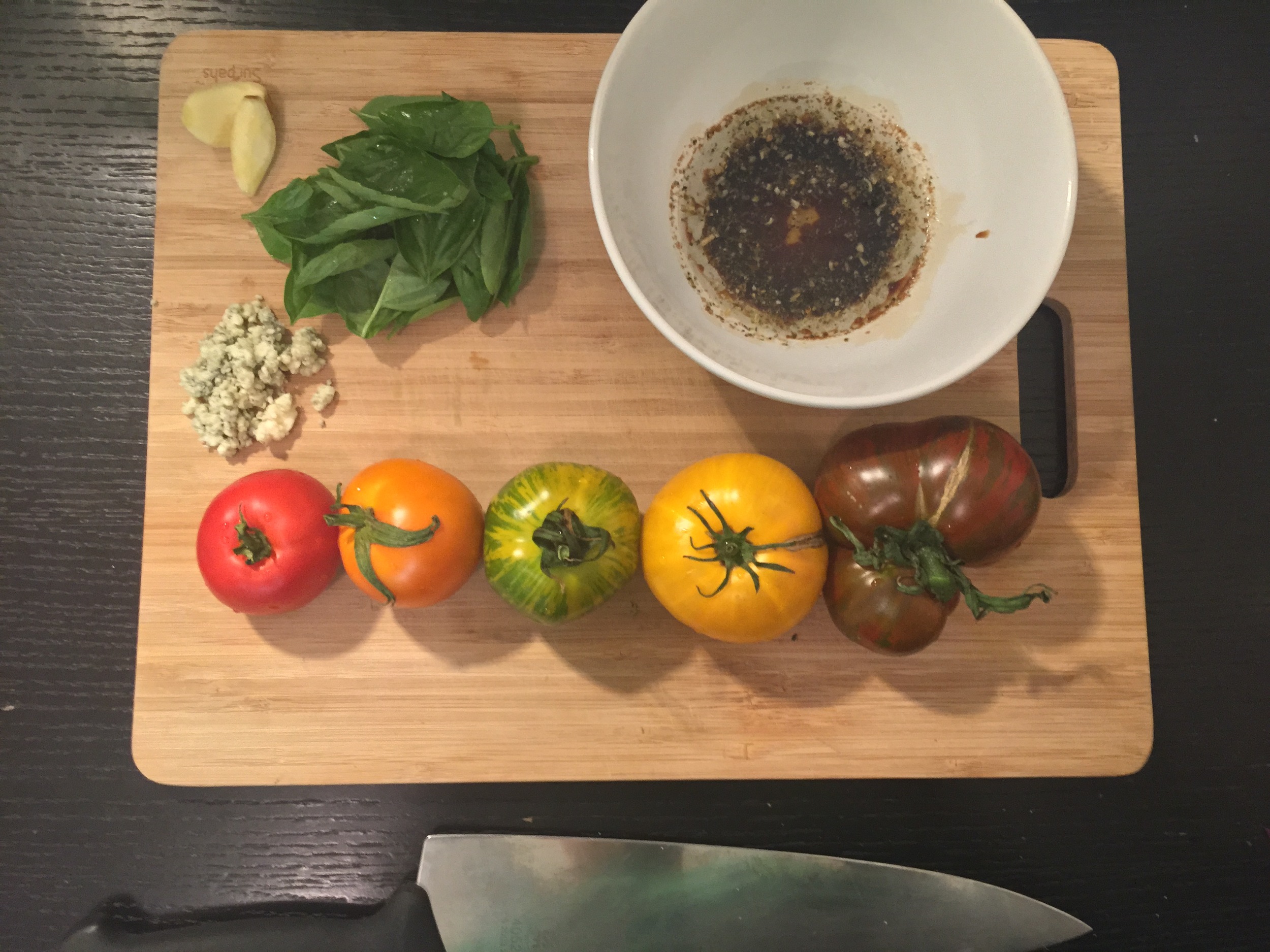Sustainable sourcing with one of the world’s largest food companies - Unilever
I’m proud to announce that I was chosen to be one of Unilever’s “Agents of Change”, which is a partnership that celebrates dietitians who, like Unilever, are making strides to create a healthier and more sustainable food supply.
A few weeks ago, I had the opportunity to join several fellow Registered Dietitians in a rich immersion trip at The Culinary Institutes of America in Hyde Park, New York. During this immersion, I was able to meet with the Senior Nutrition Manager of North America and the Sustainability Brand Manager to discuss the current initiatives that Unilever is working towards. I was delighted to learn that all of the tea in its Lipton products and the Madagascar vanilla in Breyers ice cream are Rainforest Alliance Certified™. In fact, Unilever has helped the Rainforest Alliance certify over 500,000 smallholder farmers, set up 1685 Farmer Field Schools and trained over 450,000 farmers in better growing practices. This means that the farms used to produce these products are held to vigorous environmental, social and economic standards. More on that here. In fact, the international non-profit OXFAM has rated Unilever #1 out of the top 10 global brands in their ‘Behind the Brands Scorecard’.
One of the most exciting parts of the trip was when we were challenged to a cooking contest (top chef style) with our peers. We had the guidance of some of the Culinary Institute of America’s finest chefs to help us create delicious and nutritious meals, utilizing sustainably sourced ingredients. It surprised me to learn that Unilever has especially strong business ethics, and I'm thrilled to be working with one of the largest food companies in the world to help promote these strong values!
Disclaimer: This post was sponsored in part by Unilever.
The Perfect Heirloom Tomato Salad
It's tomato season, and with that come the vast variety of juicy and flavor rich tomatoes - ranging in color, size, and shape (some admittedly much prettier than others). This recipe has been my personal favorite tomato salad, and heirloom tomatoes just make the recipe that much more beautiful. Enjoy!!
Ingredients:
- 2-3 Tbsp olive oil
- 1 Tbsp vinegar (balsalmic works best!)
- 1 tsp mustard
- 1 tsp honey or cane sugar
- 1/2 Tbsp dried herbs (oregano, basil, or rosemary)
- 1 clove garlic, minced
- 2 lbs heirloom tomatoes (mixture of colors and varieties)
- salt and pepper to taste
- blue cheese crumbles (optional for vegan)
- fresh basil
- Serve with warm, grilled crusty bread
Directions:
Whisk or blend in a blender olive oil, vinegar, mustard, honey/sugar, herbs, and garlic.
Core the tomatoes and cut out any blemishes, then slice the tomatoes in 1/2-inch thick to 1-inch thick slices.
Arrange different colors and varieties of tomato slices on two plates, sprinkle lightly with salt and pepper, and top with blue cheese crumbles. Drizzle with dressing, garnish with fresh basil.
Serve immediately with warm, crusty bread.
This recipe is from Northstar Cafe in Columbus, Ohio, and can be found here.
Look at these gorgeous tomatoes!
The Benefits of Eating A Vegetarian Diet
I am excited and honored to be featuring a post by a good friend of mine, Ginger Hultin, MS, RD, CSO, LDN, as she speaks on the vast variety of benefits that come from eating a vegetarian diet. Check out her website and bio at the bottom of the page! Thanks Ginger!
Vegetarianism continues to gain popularity; from Meatless Monday to consumer questions about vegetarianism for pregnancy, children and adolescents, to improve health or the environment, and an ever-increasing rate of veggie-based foods on menus at restaurants, hospitals and facilities, this type of cuisine seems to be on everybody’s radar. Whether already committed or veggie-curious, there are a lot of reasons to increase your veggie intake and reduce the meat you eat. Even if you are not able to commit to full vegetarianism or veganism (a vegetarian who eats no animal products at all including dairy and honey), you can positively affect your own health, the condition of our environment, and save animal’s lives or unnecessary suffering while inspiring others as you experiment with new ways to prepare delicious meals by eating less meat.
Read on to learn some of the benefits to going veg:
Taste! Vegetarian meals are delicious, fast and easy. Meatless food is far from boring; experimenting with flavorful herbs, spices and sauces can be fun for chefs and families alike.
Save money. Meat accounts for an estimated 10 percent of American food-spending. Eating vegetables, grains and fruit in place of the roughly 250 pounds of beef, chicken and fish each non-vegetarian eats annually could cut individual food bills by an average $4,000 per year.
Vegetarian diets are statistically higher in fiber. Though 25-38 grams of fiber per day is recommended, the typical American consumes only 12-15 grams. Increasing whole grains, legumes and fresh produce can easily help achieve the goal. For example, a pound of beef contains zero grams of fiber, but just one cup of lentils has 16 grams.
A love of animals — in the U.S., ten billion animals are slaughtered for human consumption each year. Many of these are factory-farmed and fed a diet tainted with pesticides, hormones and antibiotics. Help protect animals by reducing or eliminating your consumption today!
Respect for the environment and sustainability. From water protection to soil and air quality, raising animals strains our natural world much more than growing plants. Beef in particular is known for being environmentally taxing due to the quantity and types of feed consumed, as well as their methane production.
Health! Studies show that vegetarian diets are statistically higher in vitamins A, B2, C and E, beta carotene, calcium and folate than non-vegetarian diets. There is also recent research that indicates vegetarians experience a significantly lower overall incidence of cancer and a lower BMI than non-vegetarians.
Additional resources to incorporate a vegetarian lifestyle:
Fruits and Veggies More Matters, Vegetarian Awareness Month (http://www.fruitsandveggiesmorematters.org/)
Physicians Committee for Responsible Medicine Vegetarian Starter Kit (http://www.pcrm.org/health/diets/vsk)
Meatless Monday Recipe Files (http://www.meatlessmonday.com/favorite-recipes/)
Mercy for Animals Vegetarian Kit (http://www.mercyforanimals.org/files/VSG.pdf)
Vegetarian Resource Group (http://www.vrg.org/)
Happy Cow and Veg Guide (http://www.happycow.net/)
Ginger Hultin, MS, RD, CSO, LDN, is a Chicago-based writer and dietitian at the Block Center for Integrative Cancer Care specializing in integrative health and whole food-based nutrition. She serves as Chair-Elect for the Vegetarian Nutrition Dietetic Practice Group and Immediate- Past President for the Chicago Academy of Nutrition and Dietetics. Read Ginger's blog, Champagne Nutrition and follow her on Facebook, Twitter, Instagram and Pinterest.
http://www.champagnenutrition.com/
https://www.facebook.com/champagnenutrition
https://twitter.com/GingerHultinRD
https://instagram.com/champagnenutrition/
https://www.pinterest.com/champagneRDN/
Unearthing the Flavors of our Foods
Farm Fresh Spinach
While I could get into a whole post on natural and artificial flavors, I will leave that for another time. Today I want to talk about actual natural flavors. By that I mean what makes one granny smith, carrot, or tomato tastier than a similar counterpart grown on a different farm? Yep, we are comparing oranges to oranges!
To answer this question, we must dig deeper. We must look underneath the fruits and vegetables, and around their roots.
You guessed it - dirt.
Dirt gets a bad rap. We hear the word dirty and our mind fills vulgar thoughts. I want to introduce a new side of dirt to you, and will also be referring to it with a more positive name, soil. Soil is surprisingly complex - in fact, we still don’t know that much about it. It is made up of billions upon trillions of micro-organisms, similarly to ourselves, that create a biologically diverse ecosystem. This ecosystem is made up of bacteria, fungi, viruses, bugs, worms, and slugs. Soil is alive. So alive that it breathes just like you or me. I like to think of it as the Earth’s skin, as our skin is also a living organ of our body. There are so many microbes in healthy soils, that one teaspoon can conservatively contain over a billion living organisms. This might sound gross, but 1) without them we wouldn’t be alive and 2) our skin also has billions of microorganisms inside and out that help keep us healthy human beings. So think of them as protective warriors against disease.
How does this affect the taste?
Well, most of the food we eat today is grown on large, mono-cultured farms. That means, acre upon acre of fields are growing the same crop year after year (with some potential variance depending on the farmer). These types of industrial agriculture farming systems are able to feed many people, but also have significant drawbacks. If we were to take a microscope and examine the soil of these mono-cultured crops, we would see that the soil is nearly dead. The reason being, is that the soil is being supplemented with three basic macronutrients to help crops grow quickly - Nitrogen, Phosphorus, and Potassium (N-P-K). This overly-simplified approach to growing food ignores the rich bio-diversity and micronutients that live within healthy soils. When the soil's ecosystem is out of balance, so is it’s health. It can become sick and not perform well, just like us when our ecosystem is out of balance and we catch a cold.
In order to achieve truly rich flavors, as critically acclaimed NYC Chef Dan Barber states in his book The Third Plate, “Vegetables raised on a diet of N-P-K are tough, leathery and fibrous, and they also lack taste”. Farmers he interviewed stated “Artificial manures lead inevitability to artificial nutrition, artificial food, artificial animals, and finally to artificial men and women. Healthy soils brings vigorous plants, stronger and smarter people, cultural empowerment, and the wealth of a nation. We cannot have good food - healthy, sustainable, or delicious- without soil filled with life”.
It’s easy to notice the vast flavor profile differences between a conventionally grown, over-fertilized tomato, and a tomato picked off of the vine in your backyard.
Up for the Challenge?
I challenge you to buy a food that’s been shipped across the world and compare it with one grown locally and organically using sustainable farming practices - you will taste the difference! Post in the comments to tell me your thoughts!
My professional advice:
The way to the healthiest, most sustainable, and best tasting food is to connect with the growers first hand. Visit your local farmer’s market. They will tell you the story behind the food, and provide you with seasonal items specific to your region. (To find your local farmer's market, go to this website). I also recommend organic foods whenever possible. If you’re on a budget check out the EWG dirty dozen foods to buy organic guide. Lastly, don’t feel overwhelmed with making changes overnight. As any dietitian will tell you, sustainable change happens gradually. Try visiting the farmer’s market once a month, buy a few more organic vegetables at the grocery store each trip (especially foods not regionally available), and have fun! Food is meant to be enjoyed and celebrated!
Good people doing great things
I have two good friends, Marilyn and Chris, that own and operate a wonderful non-profit known as The Hummingbird Project. Their mission is to work with farmers in developing countries to educate and help return life to their over fertilized, dead soils. With backgrounds in microbiology and education, they have farmers bring soil samples from all over India to have it examined under a microscope. Most of their farmers who are dependent on chemical fertilizers are in shock to see that their soil is dead. Find out more on their website
Multi Vitamins - Needed or Not?
I often get asked, "Should I be taking multivitamins"?
Many think that multivitamins can help supplement what our daily meals may lack. Others believe they are simply flushing money down the toilet. Dietary supplements are a hugely profitable industry. The fact is that Americans spend a lot on supplements - about $11.8 billion dollars each year. This is more than any other country in the world.
The Question is: "Are Multivitamins Needed or Not"?
While there are a variety of studies, the general consensus of multivitamins is that there is no significant benefits to taking a daily multivitamins. Some show modest benefits while others demonstrate potential harm (supplement industry regulations). In my opinion, our bodies are much more complex than simply isolating nutrients in the form of multivitamins. We get more than just vitamins from whole foods. For instance phytochemicals are found in fresh fruits and vegetables and are known to protect against many types of disease. With over 10,000 different phytonutrients found in whole foods, it's tough for a synthetic supplement to match the power of food in its natural state - at least not yet. Scientists still do not know what many or even most of the phytochemicals are protective against - we do know that they are extremely beneficial.
My professional advice? Spend that extra money on obtaining nutrients through food sources. Colorful fruits and veggies are packed with nutrients that protect our body from diseases and cancer. If you're pregnant, or have other nutrient-specific needs, consult your physician or dietitian.
Could you imagine how much healthier our country would be if we spent an extra 11.8 billion in the produce aisle?
Check out this free, printable, and beautiful fruit and vegetable color guide provided by PCRM (Physicians Committee for Responsible Medicine).
Thanks and as always - if you have any questions or comments - toss a comment below.
